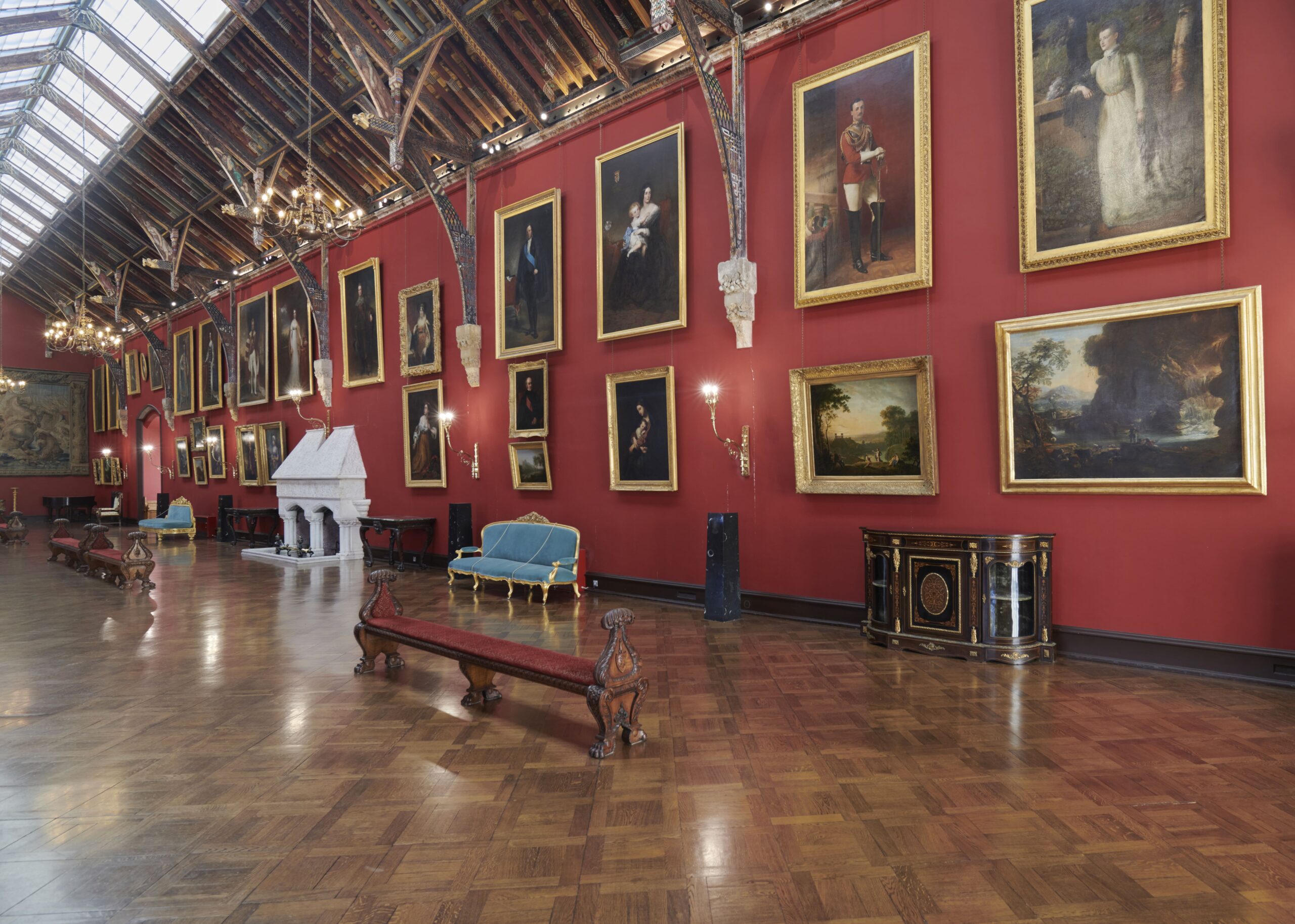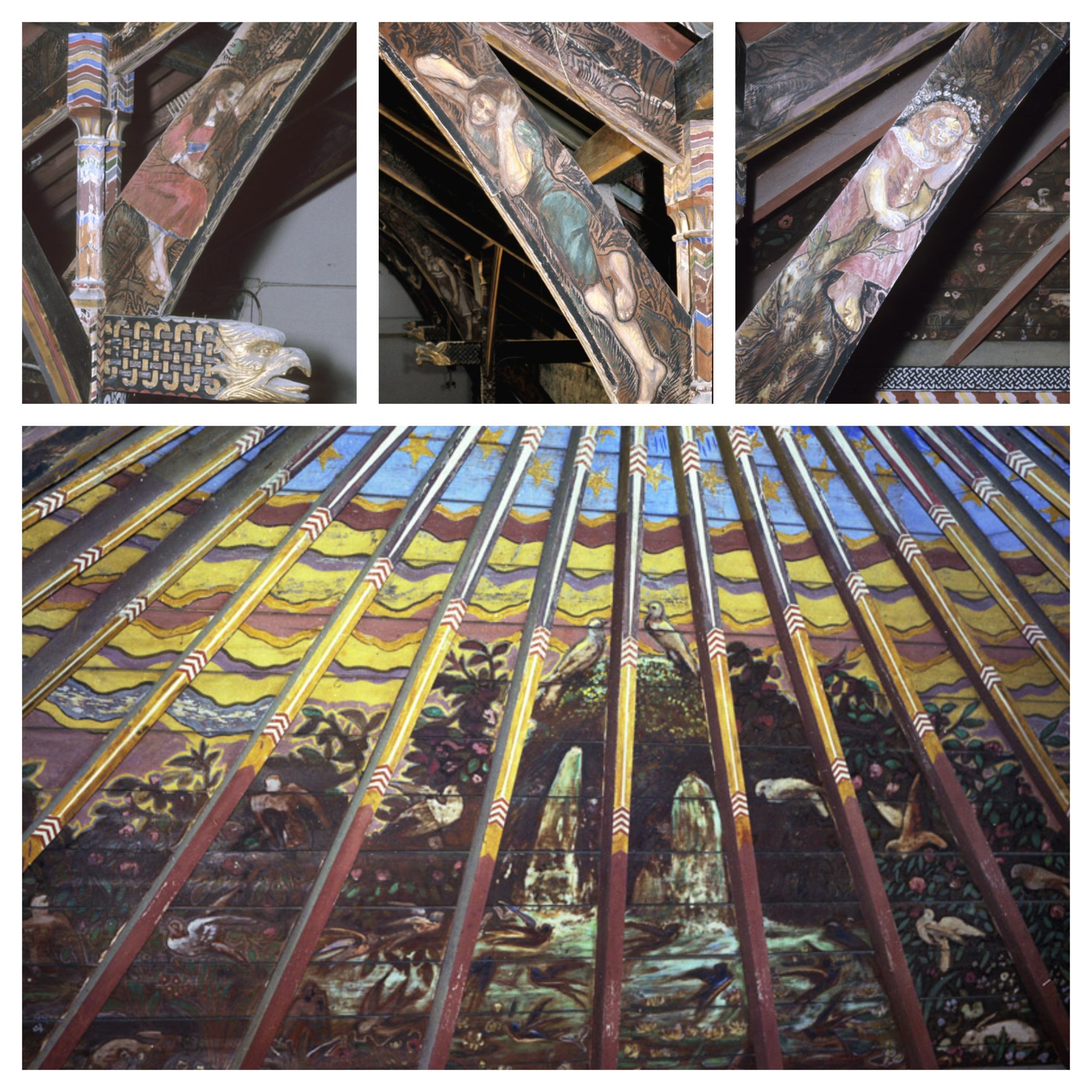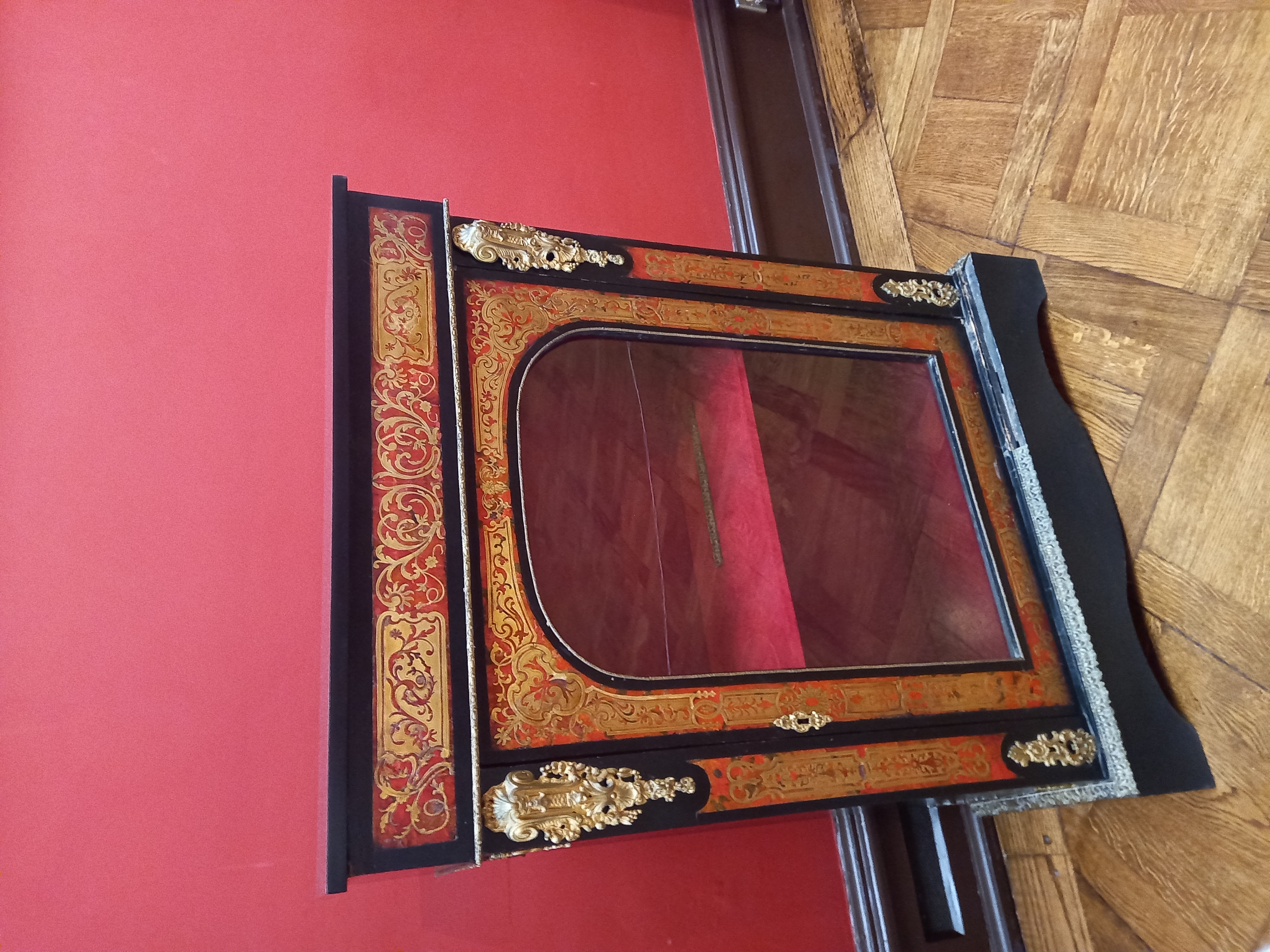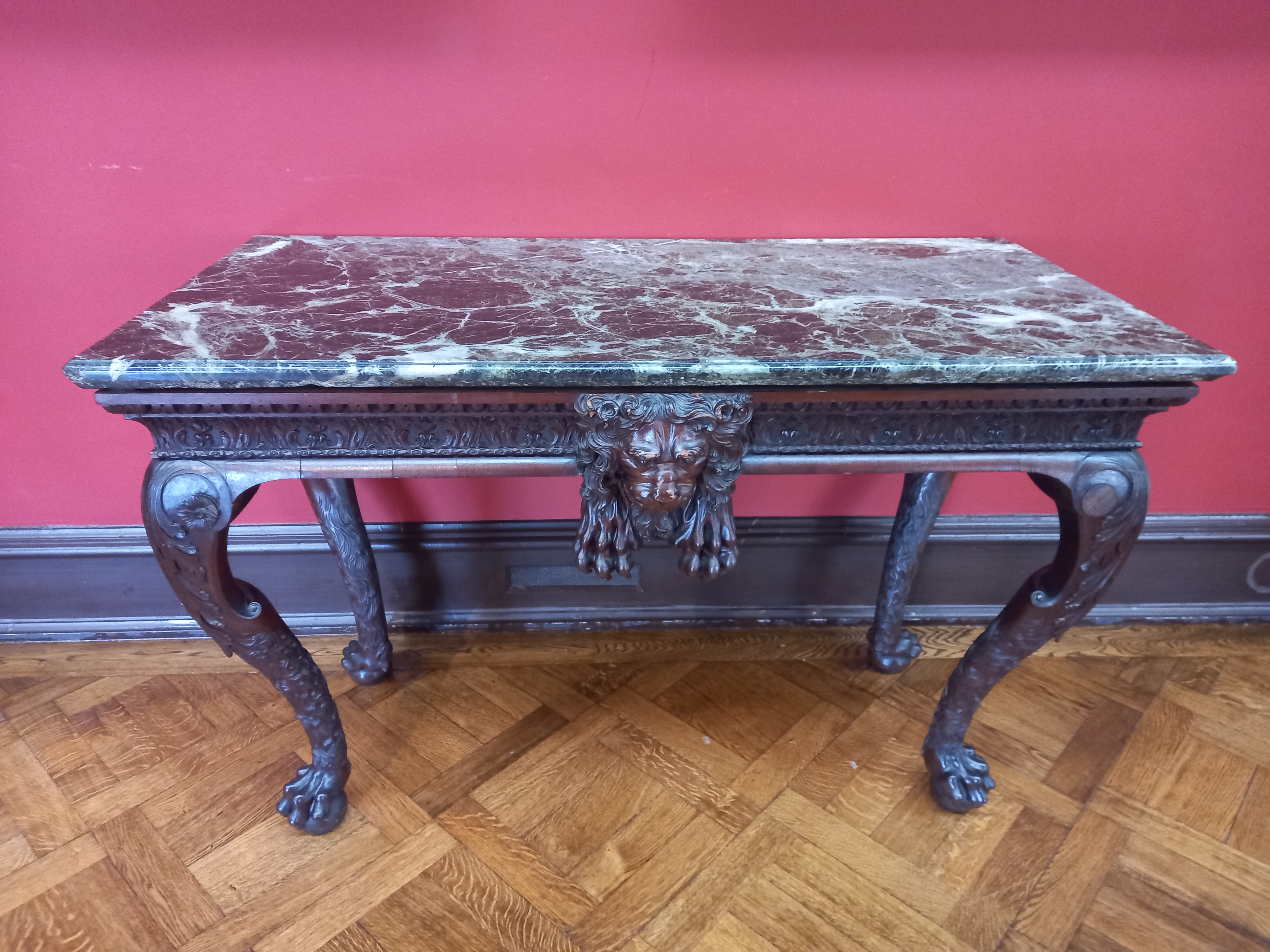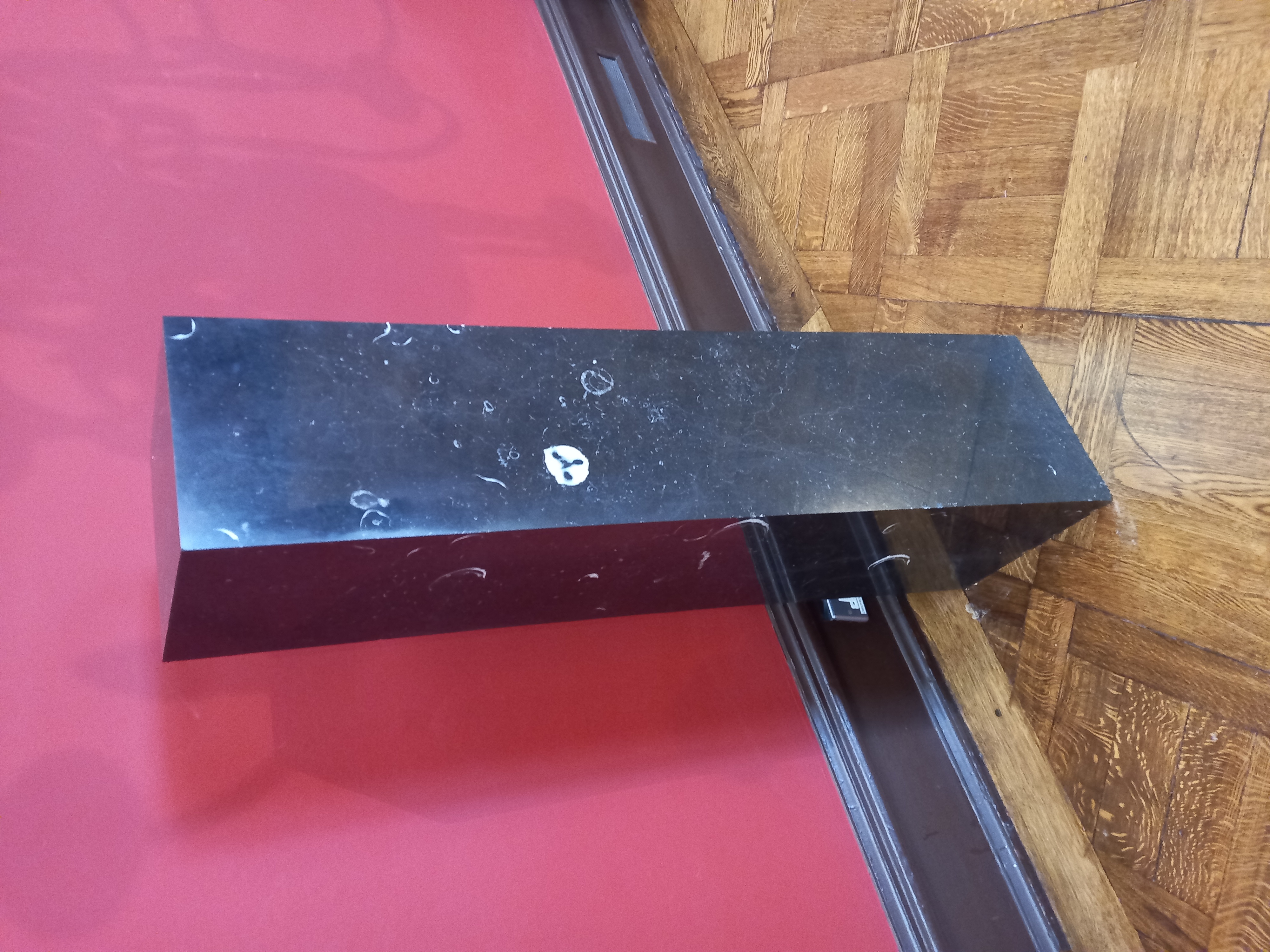The Picture Gallery
The Picture Gallery was built during the early nineteenth century building programme carried out by the architect William Robertson.
It was constructed on earlier foundations.
Robertston’s Picture Gallery, in keeping with his work on the rest of the castle, was in a Castellated Baronial style. Initially the gallery was built with a flat roof that had begun to cause problems shortly after its completion.
The distinguished architectural firm of Deane and Woodward was called in during the 1860s to make changes to the overall design of the Picture Gallery block, and other corrections to Robertson’s work.
These changes included the insertions of four oriels in the west wall and the blocking up of the eight windows, while another oriel added to the east wall.
Highlights
The roof
A pitched roof was put in place of the leaking flat one, with top lighting; that originally had green glass. The hammer beam roof structure by Deane and Woodward is supported on carved stone corbels, carved by the O’Shea brothers from Kilkenny. The entire ceiling was hand painted by John Hungerford Pollen (1820-1902), then Professor of Fine Arts at Newman College, Dublin, using a combination of motifs ranging from the quasi-medieval to the pre-Raphaelite, with interlace, gilded animal and bird heads on the cross beam.
Boulle cabinets
This pair of Boulle cabinets is made of ebonised brass mounted to brass inlaid, the sides are flanked with fluted pilasters with double doors, enclosing one shelf, thus giving two display areas.
The Boulle style is characterised by the distinctive type of inlay with brass and tortoiseshell as perfected by Andre Charles Boulle in the 1600s.
Andre Charles Boulle was one of France’s leading cabinetmakers, whose fashion of inlaying, swept Europe and was heavily imitated during the 18th and 19th centuries. Multitalented, Boulle practiced as an architect, worked in bronze and mosaic, and designed elaborate monograms.
Side tables
A pair of beautiful mahogany side table c.1740 with green marble tops (most likely Connemara) in the style of William. Kent.
The apron has lion mask against stylised acanthus under a frieze of egg and dart. Cabriole legs with ball and claw lions’ feet below vegetal ornament, rosette and scroll.
The tables show the influence of William Kent (1684-1748) in the realistic and bold detail and are either English or Irish, the slight punching on the apron possibly indicating the latter.
They are particularly fine examples of this type of table, suited to the Palladian interior in scale, colour and grandeur (most tables not having marble tops).
There is eye-catching detail in the lion’s mane and the legs are especially hairy and vivid. The rosettes are curiously left flat on the sides.
Egg and dart is a typical outer band on (gilt) picture frames at this date.
A sign of economy is the lack of carved decoration on the back, which would be against the wall and unseen.
William Kent (1685 – 1748) was the leading architect and designer of early Georgian Britain.
Credited as having introduced the Palladian style of architecture into England and originating the ‘natural’ style of gardening known as the English landscape garden, Kent was a polymath, who also turned his hand to designing sculpture, furniture, metalwork, book illustration, theatrical design and costume.
Tapestries
There are three tapestries from the “Decius” suite in the Picture Gallery:
- Desius Mus preparing for death
- The dismissal of the lictors
- The death of Decius Mus
The tapestries are attributed to the workshop of Jan Raes, after designs by Sir Peter Paul Rubens.
For more info click here
Plinths
The 12 black marble plinths are exact replicas of the original 19th century plinths.
They are made from Kilkenny’s black marble which is a highly polished limestone rock dotted with remains of fossils from the Carboniferous era.
Black marble has been quarried in Kilkenny since the 17th century and was used to pave the streets of the city hence the nickname of “Marble City”.
Kilkenny marble was used in many buildings locally and elsewhere in Ireland and abroad; Cobh Cathedral and Bowen’s court in County Cork, Lissadell House in County Sligo, St Patrick’s Church in Belfast, the headstone of Daniel O’Connell in Glasnevin Cemetery in Dublin, Cathedral Saints Peter and Paul in Providence, Rhode Island, USA and the plinth of the 2015 tomb of Richard III of England in Leicester Cathedral, UK.
The plinths would have been used for the displaying of statues and busts in the Picture Gallery in the 19th century.

